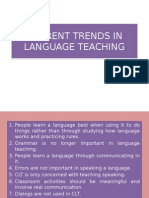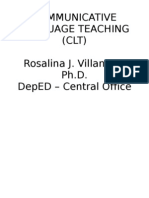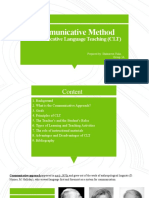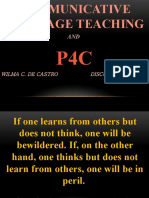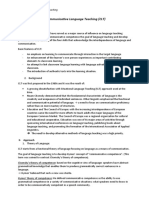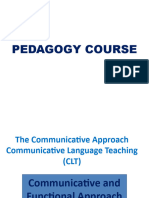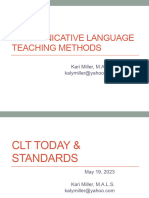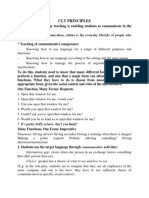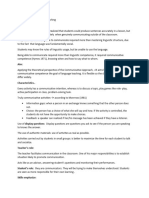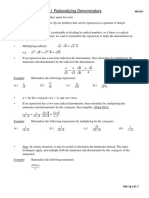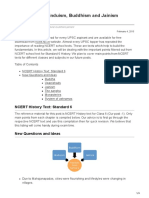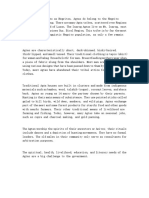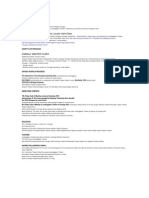0% found this document useful (0 votes)
66 views6 pagesCommunative Language
Communicative Language Teaching (CLT) emphasizes developing communicative competence through real-world communication and meaningful tasks, focusing on fluency and accuracy. It emerged in the 1970s to address the need for functional language use, promoting authentic materials and learner-centered activities. The teacher's role is to facilitate and guide, while students actively participate in their learning process, making CLT an approach rather than a fixed method.
Uploaded by
aanamel48Copyright
© © All Rights Reserved
We take content rights seriously. If you suspect this is your content, claim it here.
Available Formats
Download as DOCX, PDF, TXT or read online on Scribd
0% found this document useful (0 votes)
66 views6 pagesCommunative Language
Communicative Language Teaching (CLT) emphasizes developing communicative competence through real-world communication and meaningful tasks, focusing on fluency and accuracy. It emerged in the 1970s to address the need for functional language use, promoting authentic materials and learner-centered activities. The teacher's role is to facilitate and guide, while students actively participate in their learning process, making CLT an approach rather than a fixed method.
Uploaded by
aanamel48Copyright
© © All Rights Reserved
We take content rights seriously. If you suspect this is your content, claim it here.
Available Formats
Download as DOCX, PDF, TXT or read online on Scribd
/ 6


